Hardware
Software
Services
Prototyping
Tooling
Functional Parts
Desktop 3D Printer
Industrial 3D Printer
Stereolithography
Fused Deposition Modeling
Selective Laser Sintering
Direct Metal Laser Sintering
Polyjet Printing
Inkjet Printing
Electron Beam Melting
Laser Metal Deposition
Digital Light Processing
Laminated Object Manufacturing
Others
Design Software
Printer Software
Scanning Software
Others
Industrial 3D Printing
Automotive
Aerospace & Defense
Healthcare
Consumer Electronics
Industrial
Power & Energy
Others
Desktop 3D Printing
Educational Purpose
Fashion & Jewelry
Objects
Dental
Food
Others
Polymer
Metal
Ceramic
North America 3D Printing by ComponentHardware
Software
Services
North America 3D Printing by ApplicationPrototyping
Tooling
Functional Parts
North America 3D Printing by Printer TypeDesktop 3D Printer
Industrial 3D Printer
North America 3D Printing by TechnologyStereolithography
Fused Deposition Modeling
Selective Laser Sintering
Direct Metal Laser Sintering
Polyjet Printing
Inkjet Printing
Electron Beam Melting
Laser Metal Deposition
Digital Light Processing
Laminated Object Manufacturing
Others
North America 3D Printing by SoftwareDesign Software
Printer Software
Scanning Software
Others
North America 3D Printing by VerticalIndustrial 3D Printing
Automotive
Aerospace & Defense
Healthcare
Consumer Electronics
Industrial
Power & Energy
Others
Desktop 3D Printing
Educational Purpose
Fashion & Jewelry
Objects
Dental
Food
Others
North America 3D Printing by MaterialPolymer
Metal
Ceramic
US 3D Printing by ComponentHardware
Software
Services
US 3D Printing by ApplicationPrototyping
Tooling
Functional Parts
US 3D Printing by Printer TypeDesktop 3D Printer
Industrial 3D Printer
US 3D Printing by TechnologyStereolithography
Fused Deposition Modeling
Selective Laser Sintering
Direct Metal Laser Sintering
Polyjet Printing
Inkjet Printing
Electron Beam Melting
Laser Metal Deposition
Digital Light Processing
Laminated Object Manufacturing
Others
US 3D Printing by SoftwareDesign Software
Printer Software
Scanning Software
Others
US 3D Printing by VerticalIndustrial 3D Printing
Automotive
Aerospace & Defense
Healthcare
Consumer Electronics
Industrial
Power & Energy
Others
Desktop 3D Printing
Educational Purpose
Fashion & Jewelry
Objects
Dental
Food
Others
US 3D Printing by MaterialPolymer
Metal
Ceramic
CANADA 3D Printing by ComponentHardware
Software
Services
CANADA 3D Printing by ApplicationPrototyping
Tooling
Functional Parts
CANADA 3D Printing by Printer TypeDesktop 3D Printer
Industrial 3D Printer
CANADA 3D Printing by TechnologyStereolithography
Fused Deposition Modeling
Selective Laser Sintering
Direct Metal Laser Sintering
Polyjet Printing
Inkjet Printing
Electron Beam Melting
Laser Metal Deposition
Digital Light Processing
Laminated Object Manufacturing
Others
CANADA 3D Printing by SoftwareDesign Software
Printer Software
Scanning Software
Others
CANADA 3D Printing by VerticalIndustrial 3D Printing
Automotive
Aerospace & Defense
Healthcare
Consumer Electronics
Industrial
Power & Energy
Others
Desktop 3D Printing
Educational Purpose
Fashion & Jewelry
Objects
Dental
Food
Others
CANADA 3D Printing by MaterialPolymer
Metal
Ceramic
Europe 3D Printing by ComponentHardware
Software
Services
Europe 3D Printing by ApplicationPrototyping
Tooling
Functional Parts
Europe 3D Printing by Printer TypeDesktop 3D Printer
Industrial 3D Printer
Europe 3D Printing by TechnologyStereolithography
Fused Deposition Modeling
Selective Laser Sintering
Direct Metal Laser Sintering
Polyjet Printing
Inkjet Printing
Electron Beam Melting
Laser Metal Deposition
Digital Light Processing
Laminated Object Manufacturing
Others
Europe 3D Printing by SoftwareDesign Software
Printer Software
Scanning Software
Others
Europe 3D Printing by VerticalIndustrial 3D Printing
Automotive
Aerospace & Defense
Healthcare
Consumer Electronics
Industrial
Power & Energy
Others
Desktop 3D Printing
Educational Purpose
Fashion & Jewelry
Objects
Dental
Food
Others
Europe 3D Printing by MaterialPolymer
Metal
Ceramic
Germany Outlook (USD Billion, 2018-2032)
Germany 3D Printing by ComponentHardware
Software
Services
Germany 3D Printing by ApplicationPrototyping
Tooling
Functional Parts
Germany 3D Printing by Printer TypeDesktop 3D Printer
Industrial 3D Printer
Germany 3D Printing by TechnologyStereolithography
Fused Deposition Modeling
Selective Laser Sintering
Direct Metal Laser Sintering
Polyjet Printing
Inkjet Printing
Electron Beam Melting
Laser Metal Deposition
Digital Light Processing
Laminated Object Manufacturing
Others
Germany 3D Printing by SoftwareDesign Software
Printer Software
Scanning Software
Others
Germany 3D Printing by VerticalIndustrial 3D Printing
Automotive
Aerospace & Defense
Healthcare
Consumer Electronics
Industrial
Power & Energy
Others
Desktop 3D Printing
Educational Purpose
Fashion & Jewelry
Objects
Dental
Food
Others
Germany 3D Printing by MaterialPolymer
Metal
Ceramic
France 3D Printing by ComponentHardware
Software
Services
France 3D Printing by ApplicationPrototyping
Tooling
Functional Parts
France 3D Printing by Printer TypeDesktop 3D Printer
Industrial 3D Printer
France 3D Printing by TechnologyStereolithography
Fused Deposition Modeling
Selective Laser Sintering
Direct Metal Laser Sintering
Polyjet Printing
Inkjet Printing
Electron Beam Melting
Laser Metal Deposition
Digital Light Processing
Laminated Object Manufacturing
Others
France 3D Printing by SoftwareDesign Software
Printer Software
Scanning Software
Others
France 3D Printing by VerticalIndustrial 3D Printing
Automotive
Aerospace & Defense
Healthcare
Consumer Electronics
Industrial
Power & Energy
Others
Desktop 3D Printing
Educational Purpose
Fashion & Jewelry
Objects
Dental
Food
Others
France 3D Printing by MaterialPolymer
Metal
Ceramic
UK 3D Printing by ComponentHardware
Software
Services
UK 3D Printing by ApplicationPrototyping
Tooling
Functional Parts
UK 3D Printing by Printer TypeDesktop 3D Printer
Industrial 3D Printer
UK 3D Printing by TechnologyStereolithography
Fused Deposition Modeling
Selective Laser Sintering
Direct Metal Laser Sintering
Polyjet Printing
Inkjet Printing
Electron Beam Melting
Laser Metal Deposition
Digital Light Processing
Laminated Object Manufacturing
Others
UK 3D Printing by SoftwareDesign Software
Printer Software
Scanning Software
Others
UK 3D Printing by VerticalIndustrial 3D Printing
Automotive
Aerospace & Defense
Healthcare
Consumer Electronics
Industrial
Power & Energy
Others
Desktop 3D Printing
Educational Purpose
Fashion & Jewelry
Objects
Dental
Food
Others
UK 3D Printing by MaterialPolymer
Metal
Ceramic
ITALY 3D Printing by ComponentHardware
Software
Services
ITALY 3D Printing by ApplicationPrototyping
Tooling
Functional Parts
ITALY 3D Printing by Printer TypeDesktop 3D Printer
Industrial 3D Printer
ITALY 3D Printing by TechnologyStereolithography
Fused Deposition Modeling
Selective Laser Sintering
Direct Metal Laser Sintering
Polyjet Printing
Inkjet Printing
Electron Beam Melting
Laser Metal Deposition
Digital Light Processing
Laminated Object Manufacturing
Others
ITALY 3D Printing by SoftwareDesign Software
Printer Software
Scanning Software
Others
ITALY 3D Printing by VerticalIndustrial 3D Printing
Automotive
Aerospace & Defense
Healthcare
Consumer Electronics
Industrial
Power & Energy
Others
Desktop 3D Printing
Educational Purpose
Fashion & Jewelry
Objects
Dental
Food
Others
ITALY 3D Printing by MaterialPolymer
Metal
Ceramic
Spain 3D Printing by ComponentHardware
Software
Services
Spain 3D Printing by ApplicationPrototyping
Tooling
Functional Parts
Spain 3D Printing by Printer TypeDesktop 3D Printer
Industrial 3D Printer
Spain 3D Printing by TechnologyStereolithography
Fused Deposition Modeling
Selective Laser Sintering
Direct Metal Laser Sintering
Polyjet Printing
Inkjet Printing
Electron Beam Melting
Laser Metal Deposition
Digital Light Processing
Laminated Object Manufacturing
Others
Spain 3D Printing by SoftwareDesign Software
Printer Software
Scanning Software
Others
Spain 3D Printing by VerticalIndustrial 3D Printing
Automotive
Aerospace & Defense
Healthcare
Consumer Electronics
Industrial
Power & Energy
Others
Desktop 3D Printing
Educational Purpose
Fashion & Jewelry
Objects
Dental
Food
Others
Spain 3D Printing by MaterialPolymer
Metal
Ceramic
Rest Of Europe 3D Printing by ComponentHardware
Software
Services
Rest Of Europe 3D Printing by ApplicationPrototyping
Tooling
Functional Parts
REST OF EUROPE 3D Printing by Printer TypeDesktop 3D Printer
Industrial 3D Printer
Rest Of Europe 3D Printing by TechnologyStereolithography
Fused Deposition Modeling
Selective Laser Sintering
Direct Metal Laser Sintering
Polyjet Printing
Inkjet Printing
Electron Beam Melting
Laser Metal Deposition
Digital Light Processing
Laminated Object Manufacturing
Others
Rest Of Europe 3D Printing by SoftwareDesign Software
Printer Software
Scanning Software
Others
Rest Of Europe 3D Printing by VerticalIndustrial 3D Printing
Automotive
Aerospace & Defense
Healthcare
Consumer Electronics
Industrial
Power & Energy
Others
Desktop 3D Printing
Educational Purpose
Fashion & Jewelry
Objects
Dental
Food
Others
REST OF EUROPE 3D Printing by MaterialPolymer
Metal
Ceramic
Asia-Pacific 3D Printing by ComponentHardware
Software
Services
Asia-Pacific 3D Printing by ApplicationPrototyping
Tooling
Functional Parts
Asia-Pacific 3D Printing by Printer TypeDesktop 3D Printer
Industrial 3D Printer
Asia-Pacific 3D Printing by TechnologyStereolithography
Fused Deposition Modeling
Selective Laser Sintering
Direct Metal Laser Sintering
Polyjet Printing
Inkjet Printing
Electron Beam Melting
Laser Metal Deposition
Digital Light Processing
Laminated Object Manufacturing
Others
Asia-Pacific 3D Printing by SoftwareDesign Software
Printer Software
Scanning Software
Others
Asia-Pacific 3D Printing by VerticalIndustrial 3D Printing
Automotive
Aerospace & Defense
Healthcare
Consumer Electronics
Industrial
Power & Energy
Others
Desktop 3D Printing
Educational Purpose
Fashion & Jewelry
Objects
Dental
Food
Others
Asia-Pacific 3D Printing by MaterialPolymer
Metal
Ceramic
China 3D Printing by ComponentHardware
Software
Services
China 3D Printing by ApplicationPrototyping
Tooling
Functional Parts
China 3D Printing by Printer TypeDesktop 3D Printer
Industrial 3D Printer
China 3D Printing by TechnologyStereolithography
Fused Deposition Modeling
Selective Laser Sintering
Direct Metal Laser Sintering
Polyjet Printing
Inkjet Printing
Electron Beam Melting
Laser Metal Deposition
Digital Light Processing
Laminated Object Manufacturing
Others
China 3D Printing by SoftwareDesign Software
Printer Software
Scanning Software
Others
China 3D Printing by VerticalIndustrial 3D Printing
Automotive
Aerospace & Defense
Healthcare
Consumer Electronics
Industrial
Power & Energy
Others
Desktop 3D Printing
Educational Purpose
Fashion & Jewelry
Objects
Dental
Food
Others
China 3D Printing by MaterialPolymer
Metal
Ceramic
Japan 3D Printing by ComponentHardware
Software
Services
Japan 3D Printing by ApplicationPrototyping
Tooling
Functional Parts
Japan 3D Printing by Printer TypeDesktop 3D Printer
Industrial 3D Printer
Japan 3D Printing by TechnologyStereolithography
Fused Deposition Modeling
Selective Laser Sintering
Direct Metal Laser Sintering
Polyjet Printing
Inkjet Printing
Electron Beam Melting
Laser Metal Deposition
Digital Light Processing
Laminated Object Manufacturing
Others
Japan 3D Printing by SoftwareDesign Software
Printer Software
Scanning Software
Others
Japan 3D Printing by VerticalIndustrial 3D Printing
Automotive
Aerospace & Defense
Healthcare
Consumer Electronics
Industrial
Power & Energy
Others
Desktop 3D Printing
Educational Purpose
Fashion & Jewelry
Objects
Dental
Food
Others
Japan 3D Printing by MaterialPolymer
Metal
Ceramic
India 3D Printing by ComponentHardware
Software
Services
India 3D Printing by ApplicationPrototyping
Tooling
Functional Parts
India 3D Printing by Printer TypeDesktop 3D Printer
Industrial 3D Printer
India 3D Printing by TechnologyStereolithography
Fused Deposition Modeling
Selective Laser Sintering
Direct Metal Laser Sintering
Polyjet Printing
Inkjet Printing
Electron Beam Melting
Laser Metal Deposition
Digital Light Processing
Laminated Object Manufacturing
Others
India 3D Printing by SoftwareDesign Software
Printer Software
Scanning Software
Others
India 3D Printing by VerticalIndustrial 3D Printing
Automotive
Aerospace & Defense
Healthcare
Consumer Electronics
Industrial
Power & Energy
Others
Desktop 3D Printing
Educational Purpose
Fashion & Jewelry
Objects
Dental
Food
Others
India 3D Printing by MaterialPolymer
Metal
Ceramic
Australia 3D Printing by ComponentHardware
Software
Services
Australia 3D Printing by ApplicationPrototyping
Tooling
Functional Parts
Australia 3D Printing by Printer TypeDesktop 3D Printer
Industrial 3D Printer
Australia 3D Printing by TechnologyStereolithography
Fused Deposition Modeling
Selective Laser Sintering
Direct Metal Laser Sintering
Polyjet Printing
Inkjet Printing
Electron Beam Melting
Laser Metal Deposition
Digital Light Processing
Laminated Object Manufacturing
Others
Australia 3D Printing by SoftwareDesign Software
Printer Software
Scanning Software
Others
Australia 3D Printing by VerticalIndustrial 3D Printing
Automotive
Aerospace & Defense
Healthcare
Consumer Electronics
Industrial
Power & Energy
Others
Desktop 3D Printing
Educational Purpose
Fashion & Jewelry
Objects
Dental
Food
Others
Australia 3D Printing by MaterialPolymer
Metal
Ceramic
Rest of Asia-Pacific 3D Printing by ComponentHardware
Software
Services
Rest of Asia-Pacific 3D Printing by ApplicationPrototyping
Tooling
Functional Parts
Rest of Asia-Pacific 3D Printing by Printer TypeDesktop 3D Printer
Industrial 3D Printer
Rest of Asia-Pacific 3D Printing by TechnologyStereolithography
Fused Deposition Modeling
Selective Laser Sintering
Direct Metal Laser Sintering
Polyjet Printing
Inkjet Printing
Electron Beam Melting
Laser Metal Deposition
Digital Light Processing
Laminated Object Manufacturing
Others
Rest of Asia-Pacific 3D Printing by SoftwareDesign Software
Printer Software
Scanning Software
Others
Rest of Asia-Pacific 3D Printing by VerticalIndustrial 3D Printing
Automotive
Aerospace & Defense
Healthcare
Consumer Electronics
Industrial
Power & Energy
Others
Desktop 3D Printing
Educational Purpose
Fashion & Jewelry
Objects
Dental
Food
Others
Rest of Asia-Pacific 3D Printing by MaterialPolymer
Metal
Ceramic
Rest of the World 3D Printing by ComponentHardware
Software
Services
Rest of the World 3D Printing by ApplicationPrototyping
Tooling
Functional Parts
Rest of the World 3D Printing by Printer TypeDesktop 3D Printer
Industrial 3D Printer
Rest of the World 3D Printing by TechnologyStereolithography
Fused Deposition Modeling
Selective Laser Sintering
Direct Metal Laser Sintering
Polyjet Printing
Inkjet Printing
Electron Beam Melting
Laser Metal Deposition
Digital Light Processing
Laminated Object Manufacturing
Others
Rest of the World 3D Printing by SoftwareDesign Software
Printer Software
Scanning Software
Others
Rest of the World 3D Printing by VerticalIndustrial 3D Printing
Automotive
Aerospace & Defense
Healthcare
Consumer Electronics
Industrial
Power & Energy
Others
Desktop 3D Printing
Educational Purpose
Fashion & Jewelry
Objects
Dental
Food
Others
Rest of the World 3D Printing by MaterialPolymer
Metal
Ceramic
Middle East 3D Printing by ComponentHardware
Software
Services
Middle East 3D Printing by ApplicationPrototyping
Tooling
Functional Parts
Middle East 3D Printing by Printer TypeDesktop 3D Printer
Industrial 3D Printer
Middle East 3D Printing by TechnologyStereolithography
Fused Deposition Modeling
Selective Laser Sintering
Direct Metal Laser Sintering
Polyjet Printing
Inkjet Printing
Electron Beam Melting
Laser Metal Deposition
Digital Light Processing
Laminated Object Manufacturing
Others
Middle East 3D Printing by SoftwareDesign Software
Printer Software
Scanning Software
Others
Middle East 3D Printing by VerticalIndustrial 3D Printing
Automotive
Aerospace & Defense
Healthcare
Consumer Electronics
Industrial
Power & Energy
Others
Desktop 3D Printing
Educational Purpose
Fashion & Jewelry
Objects
Dental
Food
Others
Middle East 3D Printing by MaterialPolymer
Metal
Ceramic
Africa 3D Printing by ComponentHardware
Software
Services
Africa 3D Printing by ApplicationPrototyping
Tooling
Functional Parts
Africa 3D Printing by Printer TypeDesktop 3D Printer
Industrial 3D Printer
Africa 3D Printing by TechnologyStereolithography
Fused Deposition Modeling
Selective Laser Sintering
Direct Metal Laser Sintering
Polyjet Printing
Inkjet Printing
Electron Beam Melting
Laser Metal Deposition
Digital Light Processing
Laminated Object Manufacturing
Others
Africa 3D Printing by SoftwareDesign Software
Printer Software
Scanning Software
Others
Africa 3D Printing by VerticalIndustrial 3D Printing
Automotive
Aerospace & Defense
Healthcare
Consumer Electronics
Industrial
Power & Energy
Others
Desktop 3D Printing
Educational Purpose
Fashion & Jewelry
Objects
Dental
Food
Others
Africa 3D Printing by MaterialPolymer
Metal
Ceramic
Latin America 3D Printing by ComponentHardware
Software
Services
Latin America 3D Printing by ApplicationPrototyping
Tooling
Functional Parts
Latin America 3D Printing by Printer TypeDesktop 3D Printer
Industrial 3D Printer
Latin America 3D Printing by TechnologyStereolithography
Fused Deposition Modeling
Selective Laser Sintering
Direct Metal Laser Sintering
Polyjet Printing
Inkjet Printing
Electron Beam Melting
Laser Metal Deposition
Digital Light Processing
Laminated Object Manufacturing
Others
Latin America 3D Printing by SoftwareDesign Software
Printer Software
Scanning Software
Others
Latin America 3D Printing by VerticalIndustrial 3D Printing
Automotive
Aerospace & Defense
Healthcare
Consumer Electronics
Industrial
Power & Energy
Others
Desktop 3D Printing
Educational Purpose
Fashion & Jewelry
Objects
Dental
Food
Others
Latin America 3D Printing by MaterialPolymer
Metal
Ceramic
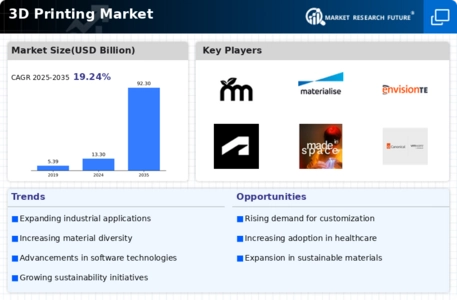
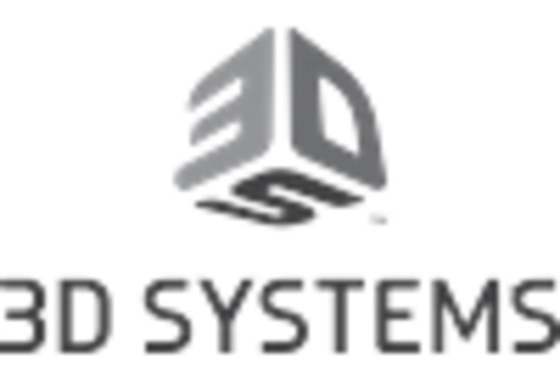
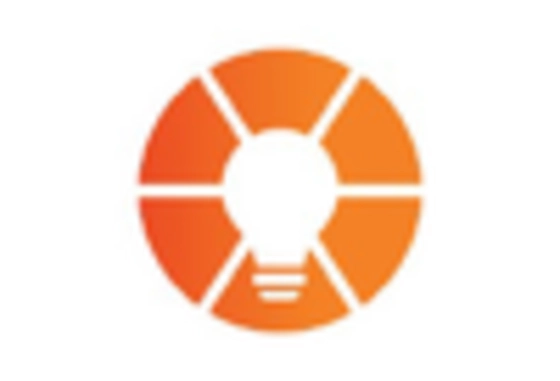
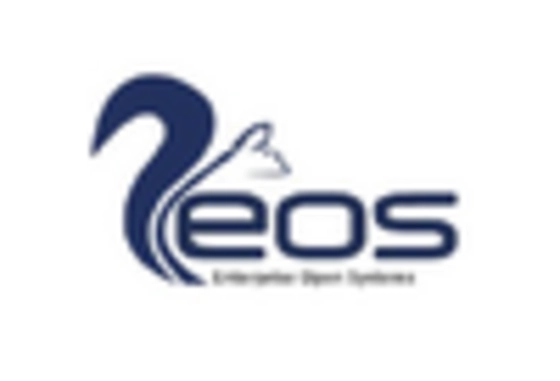
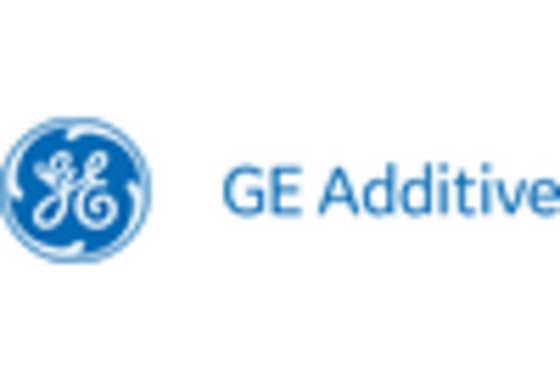
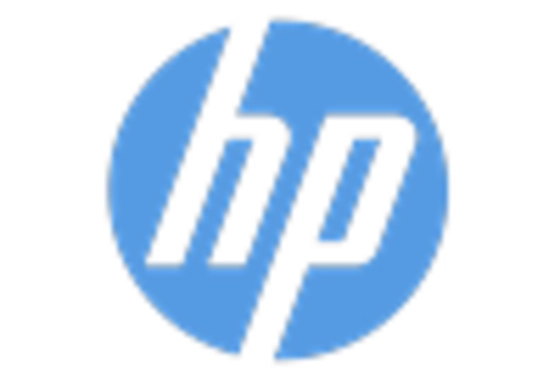
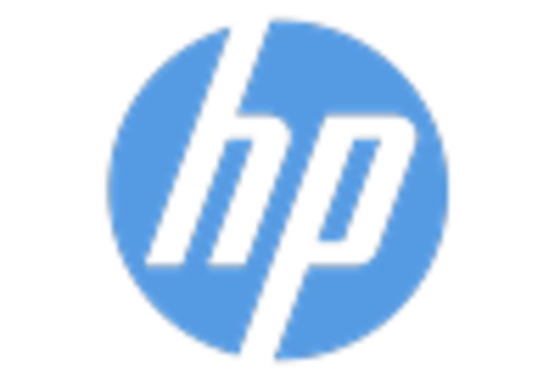
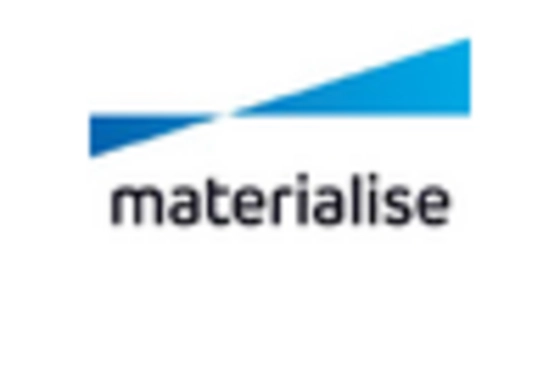

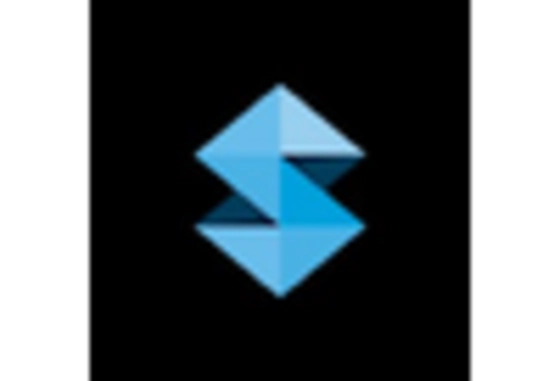

Leave a Comment